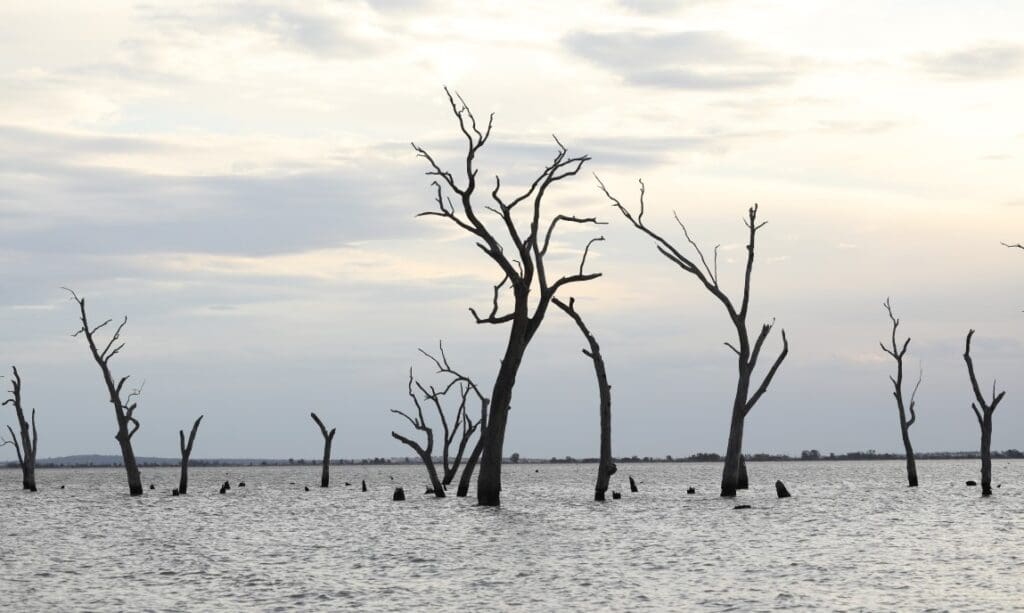Study finds American, Canadian universities vary widely in preparing future urban planners for climate change
University of Kansas – Urban and community planners have a vital role in preparing their cities for climate change. But are the university programs training them for those careers adequately preparing them for climate change in terms of mitigating, adapting to and being resilient to the effects of climate change?
New research from the University of Kansas has found American and Canadian universities have made progress but vary widely in how they address climate change in their curriculum.
The need to address climate change in urban planning has been acknowledged for some time, but standards on how to do so have been absent. To better understand how planning programs are covering the issue, three researchers surveyed how North American universities include the topic in their curriculum.
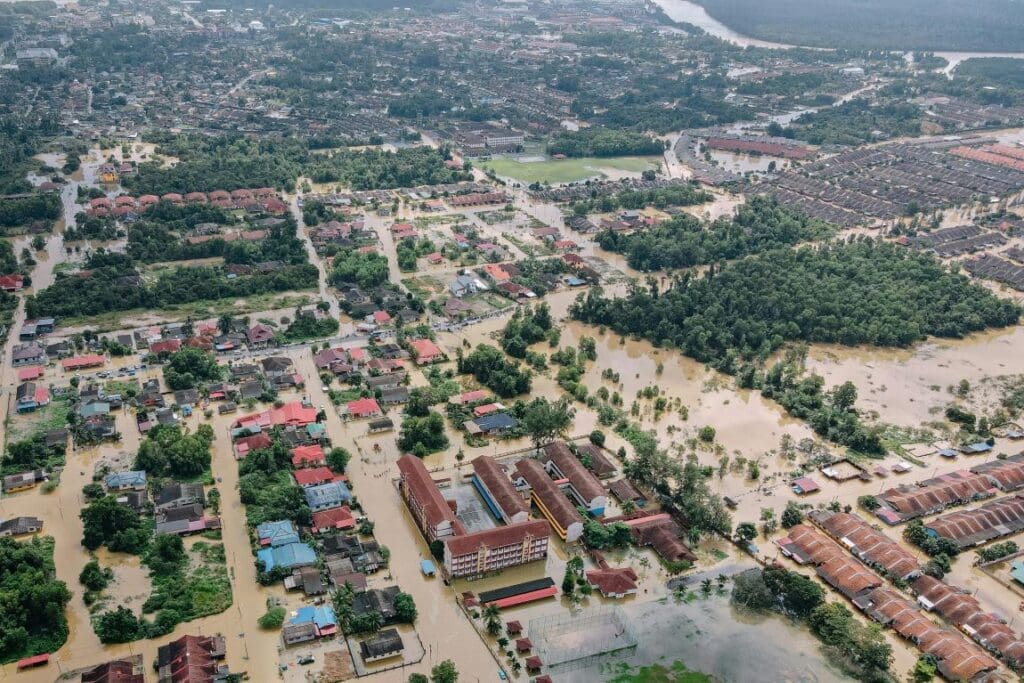
Elisabeth Infield of the University of Massachusetts Amherst, Mark Seasons of the University of Waterloo and Ward Lyles, associate professor of public affairs & administration at KU, surveyed more than 100 universities.
The study was published in the journal Planning Practice & Research.
Results of the Canadian study showed planning programs tend to cover the basics of climate science in topic-specific courses and that the majority of such content was offered in allied fields such as geography. Courses were regularly designed to promote active learning, considered local and regional context and focused on themes of justice, equity and vulnerability to hazards. Courses tended to also focus on solutions more than the physical science.
“We see that as an understandable area of focus the last 20 years, because the science is fairly settled and we’re not having to catch people up,” Lyles said. “In the earlier days people were talking about working to stave off climate change, but once Hurricane Katrina hit (in 2005), you could see the writing on the wall clearly.”
A study of U.S.-based programs found those offering a full course on climate change nearly doubled from 2010 to 2023 and that such courses were found across the country in both traditionally red and blue states.
A third, binational study aimed to identify the kinds of climate change-related content delivered in accredited planning programs in the U.S. and Canada and gather insight on what factors can facilitate or impede the subject in curriculum.
Program directors and faculty members surveyed on the topic indicated that more than 60% of programs have semesterlong elective courses on climate change, followed by required courses on climate change modules. Respondents also indicated they focus more on teaching adaptation than climate mitigation and that faculty and students most often advocated for teaching the topic than administrators, alumni or prospective employers.
Taken together, the three studies show that American and Canadian urban planning programs are increasingly addressing climate change as a central topic in education. Most include it in preexisting and often elective courses. Programs also often struggle in how deeply to cover the subject and how to apply it across areas of planning. There also tends to be more focus on adaptation in planning than on mitigation or incorporating resilience into community planning.
“We don’t believe you should be able to come out of a planning program without addressing climate change,” Lyles said. “We expect that there should be a standalone course on climate change but that we also need to work on how it will be part of all realms of urban planning education.”
The authors include a list a recommendations:
- Requiring core climate change courses in planning education and practice.
- Tracking if and how accredited planning programs comply with requirements for climate change as part of core curriculum.
- Increasing opportunities for cross-program and cross-national exchange on teaching the topic in planning.
- Expanding perspectives beyond traditional approaches to reducing greenhouse gas emissions and adaptation to climate impacts to more centrally include equity and justice in transformative planning.
- Leading by example to communicate the urgency of mitigation and adaptation and to integrate the issue into existing classes.
Lyles said addressing the topic, especially with young people who will be the next generation of planners, may be practically and emotionally difficult, but is necessary for the profession to address. Future planners will be tasked with deciding how community assets are deployed and cities are designed to withstand the increasingly severe effects of climate change.
“We found little focus on asking, ‘How do you talk to young people whose relative contribution to the problem is negligible and have been constantly told the world is struggling?’ How do we teach them about the issue? Despondency is rarely a good motivator,” Lyles said. “We’re trying to train planners to do what’s right and lead community conversations. That takes a lot of emotional intelligence. There are a lot of hard things to talk about, and we’re not doing that well enough.”
Journal Reference:
Infield, E., Seasons, M., & Lyles, W., ‘Teaching climate change planning: fostering hope while building capacity’, Planning Practice & Research 1–19 (2024). DOI: 10.1080/02697459.2024.2416298
Article Source:
Press Release/Material by University of Kansas
Researchers find North Atlantic Ocean has memory of nearly two decades
University of Liverpool – A research team, led by the University of Liverpool, has developed new approach to measure ocean memory and found that the North Atlantic Ocean has a memory of approximately one-two decades, significantly surpassing previous estimates of a few years.
Ocean memory refers to the persistence of ocean conditions and is a major source of predictability in the climate system beyond weather time scales. However, the fundamental question of “how long does the ocean remember?” has been unclear. The difficulty in identifying ocean memory is due to continual changes in atmospheric forcing masking the longer-term effects of ocean circulation.
Reported in a paper published in Geophysical Research Letters, the research team were able to quantify ocean memory by tracking the evolution of ocean temperatures in response to a single extreme atmospheric event. The authors find that there are fast and slow responses involving an immediate atmospheric effect on surface temperature and a delayed ocean redistribution of heat.

The authors attribute the extended memory of the North Atlantic Ocean to the slow pace of changes in the ocean circulation and heat transport.
Their findings suggest that fluctuations in ocean temperatures exert a significant influence on regional climates, such as air temperatures, for over a decade.
It also offers support that careful analyses of observations may enhance future climate projections over a decade.
Dr Hemant Khatri, from the University of Liverpool and lead author of the paper, said: “The study addresses a fundamental question of what ocean memory truly is. The new ocean memory framework reveals physical mechanisms responsible for multi-year ocean memory and paves the way for new methods for evaluating climate models.”
Professor Ric Williams, from the University of Liverpool and co-author of the paper, said: “This is the first time we’ve been able to measure ocean memory. We find that, in contrast to observation-based estimates, state-of-the-art climate models significantly underestimate ocean memory, estimating it at only 8-10 years. This significant discrepancy in ocean memory could have substantial implications for the accuracy of decadal climate predictions from these models.”
“Our work shows how the ocean affects our climate and how understanding the ocean temperature changes leads to enhanced skill over the next decade in climate projections”.
The study involves the University of Liverpool, the University of Oxford and UK Met Office with support from UKRI NERC.
Journal Reference:
Khatri, H., Williams, R. G., Woollings, T., & Smith, D. M., ‘An ocean memory perspective: Disentangling atmospheric control of decadal variability in the North Atlantic Ocean’, Geophysical Research Letters 51 (20), e2024GL110333 (2024). DOI: 10.1029/2024GL110333
Article Source:
Press Release/Material by University of Liverpool
The academic journal Polar Science features the seventh International Symposium on Arctic Research (ISAR-7)
ROIS | NIPR – The National Institute of Polar Research (NIPR) publishes Polar Science, a peer-reviewed quarterly journal dealing with polar science, in collaboration with Elsevier B. V.
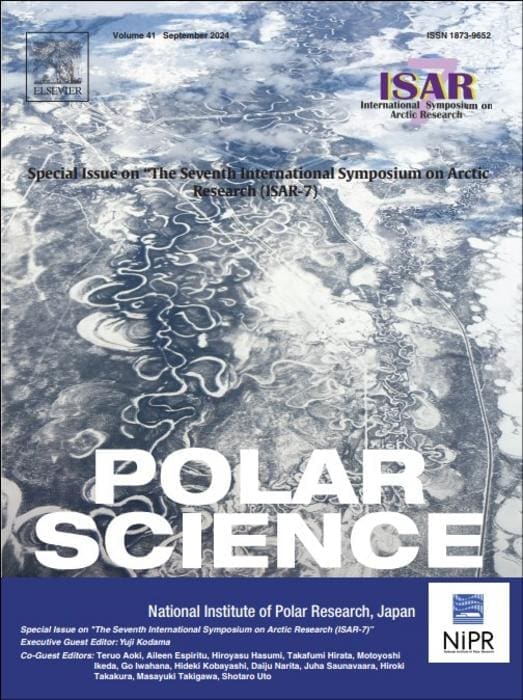
The special issue titled ‘The seventh International Symposium on Arctic Research (ISAR-7)’ was published as part of the latest issue (Vol. 41, posted in September 2024). This special issue consists of 23 high-quality papers, which span many disciplines to identify changes in the Arctic environment and society, and to discuss possible future sustainable development. The full text of issue 41 will be freely accessible worldwide until 20 March 2025.
Rapid changes, such as warmer atmosphere, shrinking sea ice cover, deteriorating ice sheet, and thawing permafrost, occurring in the Arctic have created significant challenges for residents of the Arctic and the rest of the globe. These Arctic changes have been giving influences on the region as well as outside of the region, while many nations have of economic and political with the Arctic. Thus, the Arctic research must be of interdisciplinary as well as transdisciplinary nature.
The Seventh International Symposium on Arctic Research (ISAR-7), held online and face-to-face in Tokyo during 6-10 March 2023, addressed these challenges.
The symposium consisted of 336 presentations including 95 poster presentations. Among them, the presentations that crossed disciplinary boundaries to discuss the impact on Arctic research and future research frameworks concerning the situation in the Arctic after Russia’s invasion of Ukraine attracted special attention.
Compared to previous ISARs, the number of presentations in the humanities and social sciences has increased, and the number of presentations in plenary sessions has also increased, providing an opportunity for researchers to listen to presentations of other fields of their own expertise and broaden their knowledge and having hints for collaborations with other disciplines.
This special issue of ISAR-7 covers diverse area of Arctic environment and society science, which show findings and insight on atmospheric sciences, terrestrial science, engineering sea Ice and marine science, humanities and social sciences, and the impact of the Russian invasion of Ukraine.
This special issue approached the scientific themes on those themes holistically. “By continuing academic discussions and expanding area of science of ISAR, the Japan Consortium for Arctic Environmental Research (JCAR) hopes to deepen understanding of nature and connect various subjects to contribute sustainable development by leading international interdisciplinary research,” said Dr. Yuji Kodama, Executive Guest Editor of this special issue.
Journal Reference:
Yuji Kodama, ‘The seventh International Symposium on Arctic Research (ISAR-7)’, Polar Science 41, 101111 (2024). DOI: 10.1016/j.polar.2024.101111
Article Source:
Press Release/Material by Research Organization of Information and Systems and NIPR
National Institute of Polar Research
‘Alaska’s Changing Environment’ — a new report
Heather McFarland | University of Alaska Fairbanks – The University of Alaska Fairbanks released a new report this week highlighting environmental changes and extremes that impact Alaskans and their livelihoods.
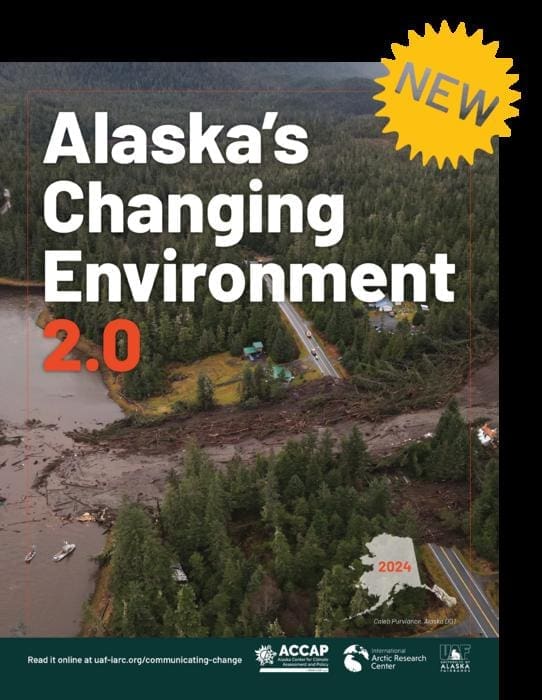
‘Alaska’s Changing Environment’ provides people with timely, reliable and understandable information on topics ranging from temperature and precipitation changes to salmon and polar bears.
The report was led by the Alaska Center for Climate Assessment and Policy at the UAF International Arctic Research Center, with contributions from more that 40 scientists and Indigenous experts across the state. This is the second edition of ‘Alaska’s Changing Environment’, which was first published in 2019.
The inaugural report proved to be a popular resource for educators, scientists, media, policymakers and others interested in learning and communicating about climate and environmental changes impacting the state.
In the five years since release of the first report, extreme weather, climate and environmental events have become more frequent. The State of Alaska declared nearly three dozen weather- or climate-related disasters, about double the 2014-19 total. A dozen of these were elevated to federal disasters. From deadly landslides in Southeast Alaska to Typhoon Merbok along the Bering Sea coast, all regions of the state have been affected.
‘Alaska’s Changing Environment’ updates key long-term climate trends. It also highlights the changes and impacts that have emerged or accelerated over the past five years.
Though the report covers nearly two dozen topics, the following four changes may be of particular interest to Alaskans.
Warmer, especially in winter
We’ve all heard that Alaska is warmer now than when our parents were young, but how much so? Alaska’s Changing Environment breaks the warming trend down by region and season. Though overall the state has warmed more than 3°F in 50 years, the biggest changes are taking place in winter. The northern portion of the state is now an astonishing 8.2°F warmer, and even in Southeast, where there are fewer changes in any season, winter is on average 2.5°F warmer.
Changing precipitation
Both summer and winter precipitation are changing in Alaska. The past five summers have been especially wet. In Southeast Alaska the recent wetness aligned with the long-term trend. Northwest Alaska had been becoming drier, but, since 2019, it has seen 1.5 times more rain than the 50-year average. Most of Alaska is also seeing rain replace snow in autumn. In some areas, there is also more freezing rain in the middle of winter. Across the state, spring is coming earlier and the entire snow season is about two weeks shorter than it was 25 years ago.
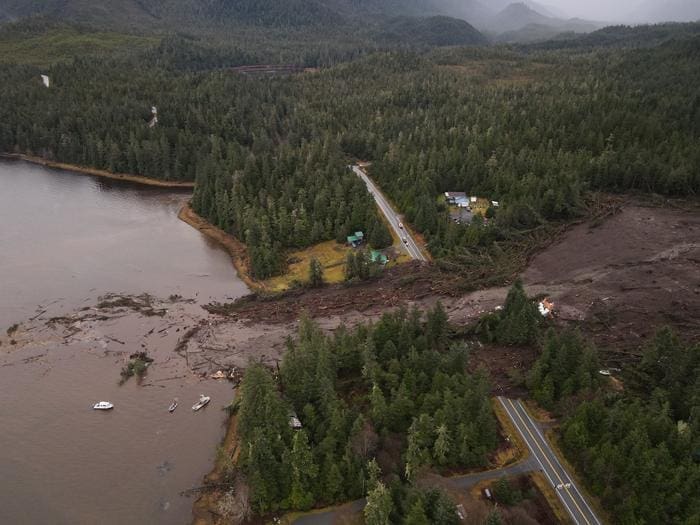
Extreme events are increasing
The frequency and intensity of extreme events like avalanches, landslides, floods and coastal storms are increasing in Alaska. Four fatal landslides have occurred in the past nine years. In 2022, Typhoon Merbok pounded Alaska’s western coast, damaging 40 communities. Three consecutive years with high-impact snowstorms have left Anchorage residents reeling. Outbursts from temporary lakes blocked by Mendenhall Glacier have produced record-setting floods in Juneau two years in a row.
Salmon highs and lows
Since 2020, Alaska salmon populations have seen record highs and record lows. In 2022, 80% fewer king salmon returned to the Yukon River than the 30-year average and 90% fewer chum salmon returned to western Alaska. Since, both species rebounded slightly, but returns remain well below average. Meanwhile, nearly double the usual number of sockeye salmon returned to Bristol Bay in 2022. Also, across the state, all species of salmon are maturing at smaller body sizes. These smaller fish produce smaller and fewer eggs.
The visual and concise approach used in Alaska’s Changing Environment to communicate environmental change has inspired several spinoffs that explore topical or regional changes across Alaska. To see the entire series and learn about wildfire, berries, Arctic policy and changes to the Bering Sea and Yukon Flats, visit https://uaf-iarc.org/communicating-change/.
More information:
Thoman, R. and H. R. McFarland, editors. ‘Alaska’s Changing Environment 2.0’ (2024). Alaska Center for Climate Assessment and Policy, International Arctic Research Center, University of Alaska Fairbanks. Link: uaf-iarc.org/communicating-change.
Article Source:
Press Release/Material by University of Alaska Fairbanks
Featured image credit: Gerd Altmann | Pixabay


